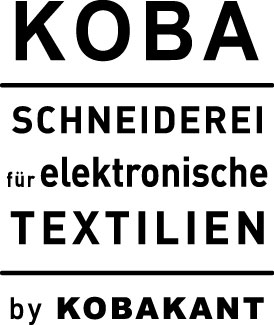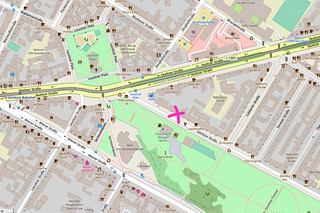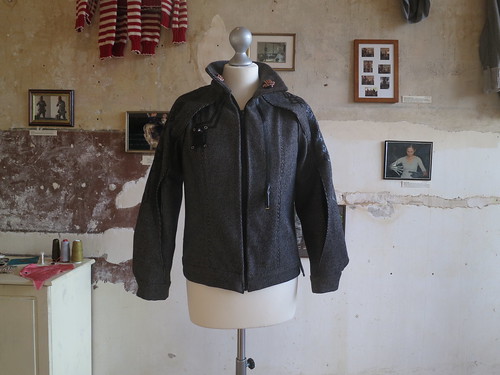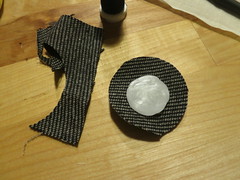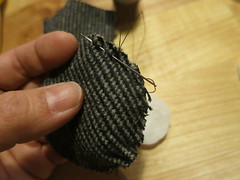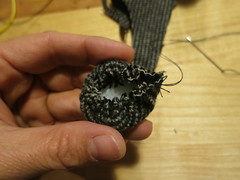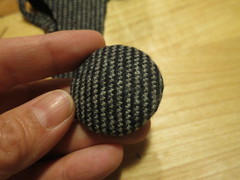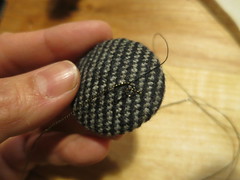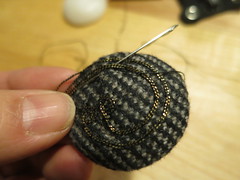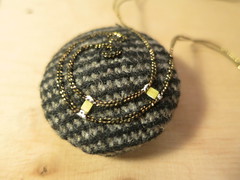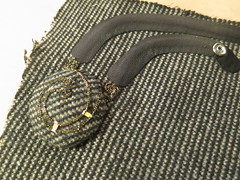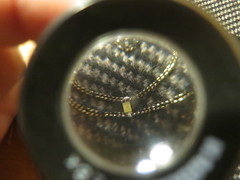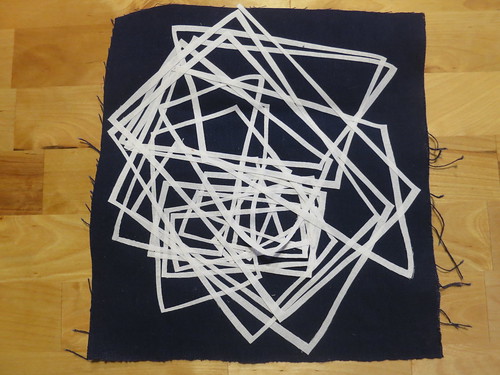EMF Listener Jacket
“As the collection piece, I am planning to make a jacket for me to cycle around Berlin listing EMF. The criteria of the garment design is “something I like to wear” that is “not too fashionable, but interesting design that can last long” and “comfortable for bicycling”.” (Mika)

materials cost: 57 Euro
techniques: fusing, soldering, sewing
hours of labor: 22 hours
CIRCUIT
See the circuit instruction post >> http://www.kobakant.at/DIY/?p=7145
Based on fabric EMF amplifire Circuit from Martin De Bie’s workshop at Summer Camp
http://etextile-summercamp.org/2016/emf/

The same circuit can be made much smaller when using protoboard
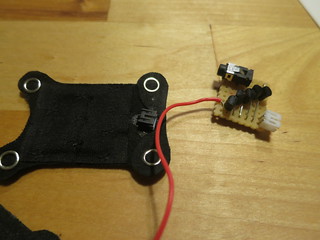
The big question is whether to go for fabric circuit or make custom hard/flexible PCB that is sewable. PCB solution will be noiseless, robust and smaller. On the other hand fabric circuit is much more interesting when we talk about eTextile as foreground discussion. The problem of the fabric circuit is that it tend to spread in larger surface because of the use of fabric, which adds more noise for EMF amplification. The solder joint between hard component and conductive textile material tend to break as it get the most strain as it becomes bending point.
As a solution, I thought about making them into fabric covered button, and create the circuit as embroidery on the button. To reduce the size and avoid the components to be scratched off, we can use SMD components to keep them flat.
The idea was tested with LED circuit using 2 SMD LED. Button base is made with thermoplastic. Unlike the real fabric button, it does not have to function as a button, so it does not have the button holes/ legs.
Now connected Lipo battery, and bend, scrunched, flapped, scratched… but it seemed to be ok. It feels quite robust.

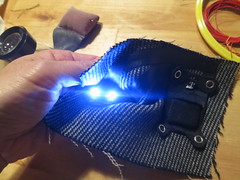
The test result looks good. I will try this method with EMF amplifer circuit. I bought SMD transistors from Segor. Hopefully it is arriving in a few days..
2N3904(NPN) and 2N3906(PNP)
The antenna can be a piece of conductive fabric or any conductive material. Some antennas are designed to catch certain frequency. In this project, I’m planning to make the antenna into coil shape. Here is a bit of reading for RF antenna design.. though, I am not sure if the coil shape antenna design is the right way to go…
http://www.radio-electronics.com/info/antennas/basics/resonance.php
Here are some test on textile antenna.
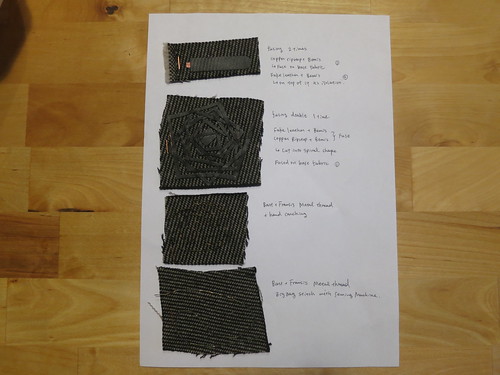


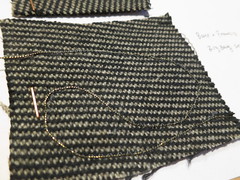
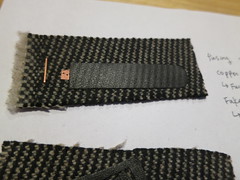
GARMENT
As the collection piece, I am planning to make a jacket for me to cycle around Berlin listing EMF. The criteria of the garment design is “something I like to wear” that is “not too fashionable, but interesting design that can last long” and “comfortable for bicycling”.
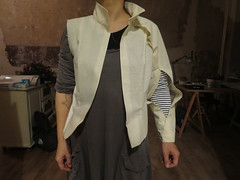
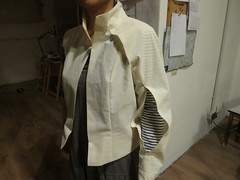
I chose raglan sleeve as it does not have a seam at the shoulder and I can embed the antenna on the whole sleeve parts. The sleeve part is made in 2 layers. The inner sleeve is made with stretch material and is regular sleeve shape with shoulder seam. then the raglan sleeve with embedded antenna is added as 2nd layer. The inner elbow part is opened to make it look interesting. The circuit and the battery will be placed on the collar.
